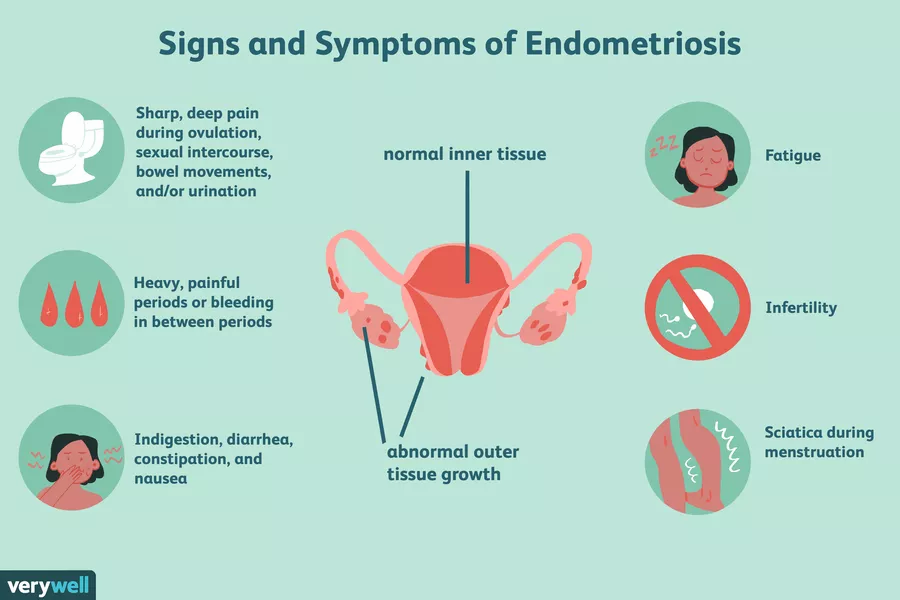Could Your Period Pain Be a Sign of Endometriosis?
- Alyssa Sinicropi

- Mar 21, 2021
- 3 min read

What is endometriosis?
Endometriosis is a gynecological condition that affects 2-10% of American people with a uterus of childbearing age. During the menstrual cycle, typically tissue builds up and is shed if there is no pregnancy; however, people with endometriosis develop tissue outside of the uterus, usually on other reproductive organs inside the pelvis or in the abdominal cavity. The result of this misplaced tissue is small bleeding inside of the pelvis which causes inflammation, swelling, and scarring of the normal tissue surrounding the endometriosis implants. If the ovary is involved, blood can embed itself in the ovarian tissue in a blood blister surrounded by a fibrous cyst, called an endometrioma.
Where can endometriosis occur?
The most common sites are the following:
The ovaries
The fallopian tubes
Ligaments that support the uterus
The posterior cul de sac
The anterior cul de sac
The outer surface of the uterus
The lining of the pelvic cavity
Endometriosis can also occur in the following:
The intestines
The rectum
The bladder
The vagina
The cervix
The vulva
Abdominal surgery scars
What are the risk factors?
Anyone with a uterus can develop endometriosis but people who have a first degree relative with the disease, people who are giving birth for the first time after age 30, and people with an abnormal uterus are at higher risk. While the cause is still unknown, theories suggest that cells in any location can transform into endometrial cells while endometriosis can also be the result of direct transplantation in the abdominal wall after a cesarean section. It also appears that certain families have predisposing genetic factors that may lead to endometriosis.
What are the symptoms?
Some people may experience severe symptoms while others may not experience any symptoms at all. Regardless, the amount of pain that someone experiences as a result of endometriosis is not always related to the severity of the disease. Some people may experience little to no pain but have a severe case of endometriosis while others may feel severe pain and have a milder form of the disease. The common symptoms are as follows:
Pain (especially excessive menstrual cramps felt in the abdomen or lower back)
Pain during intercourse
Abnormal or heavy menstrual flow
Infertility
Painful urination during menstrual periods
Painful bowel movements during menstrual periods
Other gastrointestinal problems (diarrhea, constipation, nausea)
How is endometriosis diagnosed?
Diagnosis begins with a gynecologist or other health care provider doing an evaluation of patient medical history and by performing a physical examination, including a pelvic exam. An endometriosis diagnosis can only be proven through the performance of a laparoscopy, biopsies of any suspicious tissue, and the tissue is examined beneath a microscope for confirmation. The Laparoscopy is used to determine the location, extent, and size of any endometrial growths.
From there, if there is a case of endometriosis, there is a classification system. The classification system follows stages: stages 1 through 4, minimal, mild, moderate, and severe. The stages are based on the extent of the spread of the tissue, the involvement of pelvic structures in the disease, the extent of the pelvic adhesions, and the blockage of the fallopian tubes.
What are the treatment options?
Specific treatment will be determined by your healthcare provider and, with mild symptoms, the usual treatment includes pain medication, “watchful waiting” to observe the disease, and hormone therapy (oral contraceptives, progestins, gonadotropin-releasing hormone agonist, danazol). Surgical treatment for more severe cases includes laparoscopy (minor surgical procedure to view the pelvic area and remove endometrial growth), laparotomy (more extensive surgery to remove as much of displaced endometrium as possible without damaging healthy tissue), and hysterectomy (surgery to remove the uterus and possibly the ovaries).
References:
Wong, Cathy. “11 Alternative Therapies to Treat Endometriosis.” Verywell Health, www.verywellhealth.com/natural-treatments-for-endometriosis-89275.
“Endometriosis.” Johns Hopkins Medicine, www.hopkinsmedicine.org/health/conditions-and-diseases/endometriosis.


Comments